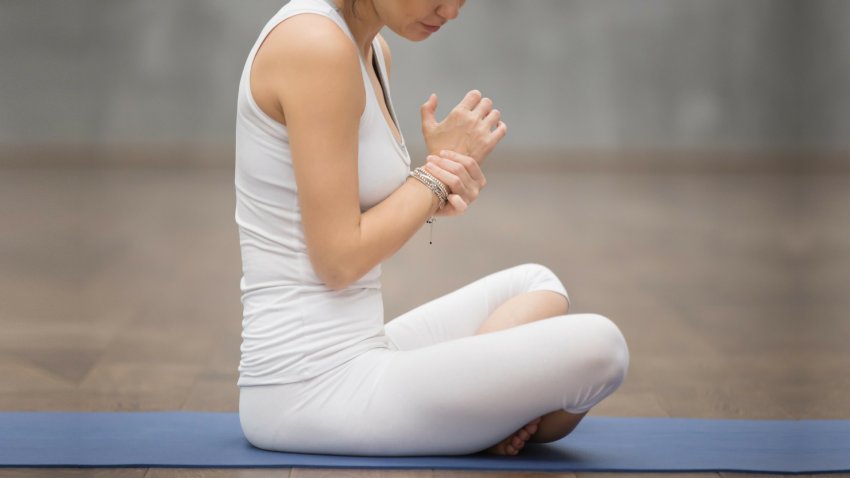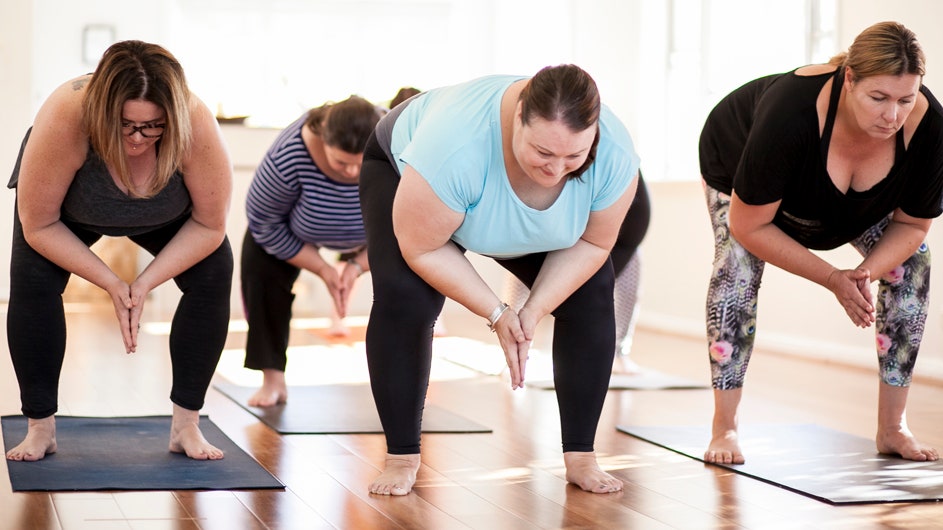
It can be difficult to grasp the anatomy of yoga poses. It is important to keep your body in mind when practicing yoga poses. Tight muscles may be the culprit for many people's limitations. But compression is what really causes them. It is not something to be afraid of, even though it can seem daunting. To reap the benefits of yoga, you need to understand the anatomy. This article will explain how to make yoga poses more enjoyable.
Yoga poses' anatomy is heavily dependent on the muscles. The hamstrings, in general, are responsible for knee extension or flexion. They are located at the pelvic floor and run down to the elbow. Hip extension and hipflexion are both important functions of the hamstrings in yoga. There are many variations of the hamstrings and it is important to know which one you have before you attempt any yoga poses.

The hamstrings control the extension of your knee. They originate from the iliac spine and the femur and insert on the posterior calcaneus. Because of this, hamstrings have a vital role in many types if yoga poses. Gastrocnemius on the other hand is found in the medial, lateral, and medial condyles. This muscle is responsible to plantar flexion.
As we said, every body is different. While the yoga world would like you to believe otherwise, the truth is that every body is anatomically unique and will not perform the same poses. No matter if you are a woman or man, your anatomy can impact your ability to perform any pose correctly. It is important to understand your unique anatomy in order to practice yoga properly.
You should know how your body works, not only yoga poses. The adducted, elongated and basic muscles should all be well-known. You need to be familiar with the differences between abduction or flexion as well as how your body moves through each. Begin a yoga practice if you're a beginner.

Each person's body is different from the photographs of yogis. This means that you cannot achieve the same yoga poses with the same body as someone else. It's helpful to have a book of photos showing dozens of poses along with their anatomy. However, this is not enough. It is essential to learn the physiology and safety of yoga before you can practice it safely. You should be able to perform a particular pose using an exercise video.
FAQ
How many calories do I need to eat each day?
This can vary from person to person. On average, you need 2000 to 2500 calories per days. Based on your age, gender, height and activity level, you will need to calculate how many calories you require.
Which workout is best for men?
The answer will depend on what you are searching for. If you want to lose weight, cardio workouts are great because they burn calories faster than strength training exercises.
However, strength training can be beneficial if you only want to build muscle mass. It increases lean mass.
Both types have been proven to have benefits for your overall well-being.
I recommend HIIT (or sprint interval training) if you want to be fit quickly. This type of training helps you burn fat quickly by increasing your metabolism. This type of training also increases your endurance, allowing you to train even when you are tired.
What if I exercise and drink alcohol?
Yes. Alcohol can increase energy expenditure, speed up healing time, and reduce soreness.
Additionally, alcohol can increase insulin sensitivity and make it easier to absorb glucose.
However, alcohol can cause dehydration, which can slow down your metabolism. Also, alcohol can reduce testosterone production, which may lead to lower muscle-building potential.
For these reasons, women shouldn't drink alcoholic beverages before working out. Women who drink heavily should wait at least 24 hours between drinking and working out.
The best thing for women who are pregnant is to avoid alcohol.
Men should limit their intake to one drink per day.
What is the best way to train?
It all depends on what you're looking for. If you want to build muscle mass, then do heavy weights first. Then move into cardio. You can then go to strength training if your goal is to lose weight.
Start with cardio if you only want to lose fat. After that, you can add strength training.
If you are looking for muscle mass, cardio should be your last option. Cardio stimulates growth hormones and helps build muscle mass.
You should also eat before your workout. You will be able to give your muscles more fuel so they can work harder. You will feel happier during your workout.
Is it true to say that protein overeating can lead to kidney stones?
Protein is essential for healthy bones and tissue. Consuming too much protein can result is calcium excretion via urine. In turn, this can result in kidney stones.
It's important to note that not everyone gets kidney stones after eating more than 2 grams of protein per kilogram (2.2 pounds) of body weight. You don't have to eat a lot of protein to get kidney stones.
By being careful with your sodium intake, you can prevent kidney stones. The kidneys regulate the amount of sodium they consume. Too much sodium can cause kidney stones.
You may also want to reduce your protein intake in the event of kidney stones. The majority of adults need protein for half their daily caloric needs. If you cut back on protein, you'll likely lose weight.
If you do decide to eat more protein, don't go overboard. Limit your intake to 20% of your total daily protein intake.
Is weightlifting more effective at burning fat?
Weight lifting will help you burn more fat, but it's best to combine it and cardio.
You should do weightlifting after your cardio workouts to maximize its benefits.
If done correctly weightlifting can raise your heart rate, oxygen consumption and help you lose weight.
But if you do not combine it with cardio, you will not see any significant changes in your body composition.
Statistics
- Get free shipping and 25% off today. (healthline.com)
- According to the American Heart Association, blood pressure should be checked at least once every two years, beginning at age 20. (my.clevelandclinic.org)
- An estimated calorie range for moderately active adult males falls between 2,200 to 2,800 calories per day, depending on age. (eatright.org)
- The PRS enabled risk stratification for overall prostate cancer and lethal disease with a four-fold difference between men in the highest and lowest quartiles (HR, 4.32; 95% confidence interval [CI], 3.16-5.89). (pubmed.ncbi.nlm.nih.gov)
- Candidates and applicants must pass all four tests at 70% (minimum level) to graduate from Basic Deputy U.S. Marshal (BDUSM) Training. (usmarshals.gov)
External Links
How To
How can a man lose weight in just 30 days.
Breaking down your fitness goals into manageable steps is the best way to reach your goals.
You need to make sure you are working towards the goal each day. This could mean doing 10 pushups every 5 minutes or running 3 km.
If you do this consistently over time, you will see positive results.
Be consistent is key. You have to keep at it until you succeed!
What is the difference in Aerobic Fitness and Anaerobic Fitness
Anaerobic fitness refers to the ability of our bodies to perform intense physical work without oxygen. Anaerobic pathways are used when there is intense exercise to provide sufficient energy. Anaerobic pathways can include glycolysis, creatinephosphate, the Phosphagen, and lactic acids.
Aerobic fitness, on the other hand, is a sustained low-intensity exercise. Aerobic exercise is a form of aerobic exercise in which oxygen is the primary fuel source for the cells. In other words, aerobic pathways provide more energy than anaerobic.
For example, if you want to run a marathon, you must first build up your aerobic capacity. If you only focus on building up your anaerobic capacity, you won't be able to finish the race.
Aerobic fitness also refers to cardiovascular fitness. The most common methods for assessing cardiovascular fitness include VO2 max testing or step tests.
Test VO2 Max
VO2max is the maximum oxygen (O2) that your body can use while exercising. This test measures the amount of O2 the body can utilize while exercising.
This is the best test to assess cardiovascular fitness. However, the test can only be administered by highly trained professionals and requires expensive equipment.
Step Tests
Step tests are simple yet effective methods of measuring cardiovascular fitness. These are based on your weight and age, they require you to run or walk on a track.
These tests are simple to perform, cost-effective, and easily accessible from almost any location. You can, for example, walk for 2 minutes on a treadmill, then rest for 1 min, then repeat the process for 20 minutes. Then, stop. Throughout the session your heart rate should not exceed a specified range.
This protocol is called the "Bruce Protocol". Bruce was himself a runner and developed the protocol after realizing his heart rate wouldn't increase when he ran for longer distances.